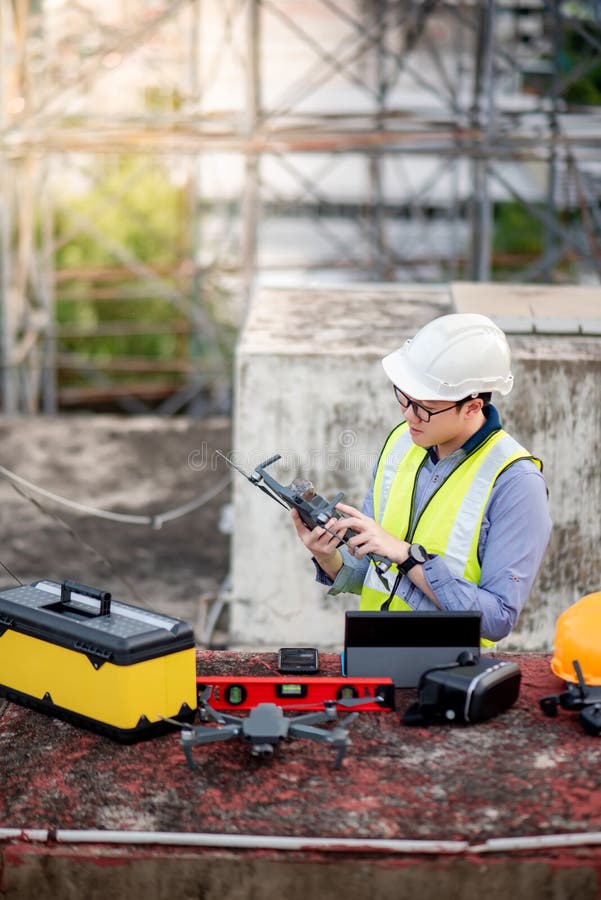Being in a position to capture precise and accurate visual representations of a worksite quickly and efficiently is really a major good thing about using drones for surveying. But you can find other advantages as well.
Take the guesswork out of pre-bids and progress tracking
Bills of quantities in construction enable fast and simple comparison of contractor proposals. Since all bidders are quoting the same level of work, it?s easy to identify differences in cost. Bills of quantities are also used to clearly define the scope of work on a project. Since quantities and amounts are provided, there?s no room for misinterpretation and less potential for mathematical errors. Utilizing a drone to survey materials on a prospective jobsite helps to ensure that the contractor pricing you submit is accurate, and you?ll be compensated for the task you complete. Comparing your initial site survey to the original ground file provided permits you to request a change-order upfront to secure more money for the project in the event that you spot an unfavorable variance between the two.
Avoid rework
In line with the Construction Industry Institute, rework is estimated to represent 2%-20% of total costs. It impacts project timelines, costs, schedules, machine resources, and person hours. Which erode profitability. A significant cause for rework is a insufficient information or using outdated information in decision making. Technology, like the Propeller Platform, makes solving this problem easier with an increase of accurate and timely data. Drone surveying enables site supervisors and superintendents to receive up-to-date maps with accurate specs approximately 1 day after requesting them, which contributes to better decision making and ultimately less rework.
Improve https://aerial-lidar.co.uk/best-drone-surveyors/ -to-office communications
Survey data captured by drones and processed by software platforms like Propeller help centralize project documentation and increase collaboration with surveyors, engineers, foremen, and site managers. Collaboration challenges span the complete life of any project also it?s important that all stakeholders at each stage have the data they need to understand in case a project is on track, on budget, and on schedule. Platforms like Propeller centralize all your information in one place including present and past surveys, designs and iterations, and all your notes, reports and files.

Minimize change orders
Based on the Independent Project Analysis Group, typically 35% of most construction projects will incur a significant change. One study indicated that change orders resulted in project cost overruns of 11-15% normally and delayed projects as much as 20% beyond scheduled completion dates
Avoid disputes
A 2022 study discovered that 87% greater than 500 respondents from architecture, engineering, and construction firms had handled disputes in past times 12 months, a considerable increase from 63% in 2021. In their annual Global Construction Disputes Report (2022), Arcadis discovered that the leading reason behind disputes in THE UNITED STATES was poor record keeping and documentation.
Resolving disputes requires a clear communication and documentation plan. Drone surveys conducted in the beginning of a project and at regular intervals throughout the course of the work provide a historical record and a frequent (and reliable) record of progress over time. Should a dispute arise, contractors can revisit the relevant site survey to handle any concerns.
Accurate records established with drone data also enable contractors to quickly identify and address project errors or concerns and provide clear, accurate, unbiased, and easy-to-understand documentation of every stage in the project.
Save time and money
Measuring quantities and progress manually takes time, resources, and often a full-time dedicated person. And in remote areas, a large chunk of time is spent just accessing a niche site. When survey data can be captured and processed in hours, not days or weeks, projects go smoother with less rework, added expense, and overhead. Using cloud-based processing also eliminates the necessity for server and computer costs and is much more scalable.
Site balancing
Among the major costs in earthworks is importing or exporting dirt from the site. A way to save money because of this operation is determining if the project can be achieved by only using the dirt that?s currently on site, referred to as site balancing. When developing a grade design for a civil construction or earthworks project, a key goal is to ensure the dirt face to face site balances whenever you can. Therefore the cuts and fills are relatively equal, in order that contractors don?t have to import or export dirt in trucks to finish a job, which is often costly. Moving the prevailing earth around on site with excavation machinery is less expensive. When you survey your worksite with a drone, the info you obtain allows you to track your dirt quantities more accurately and balance your website.
Reduce safety risks
Flying a drone enables surveyors to stay on stable ground while safely navigating dangerous terrains and slopes or avoid close connection with busy highways. Drone surveying keeps crews onsite for less time than traditional survey methods, reducing the chance for an injury that occurs. Mapping a site becomes as simple as programming a flight path and piloting the drone, also it yields just as accurate results.
